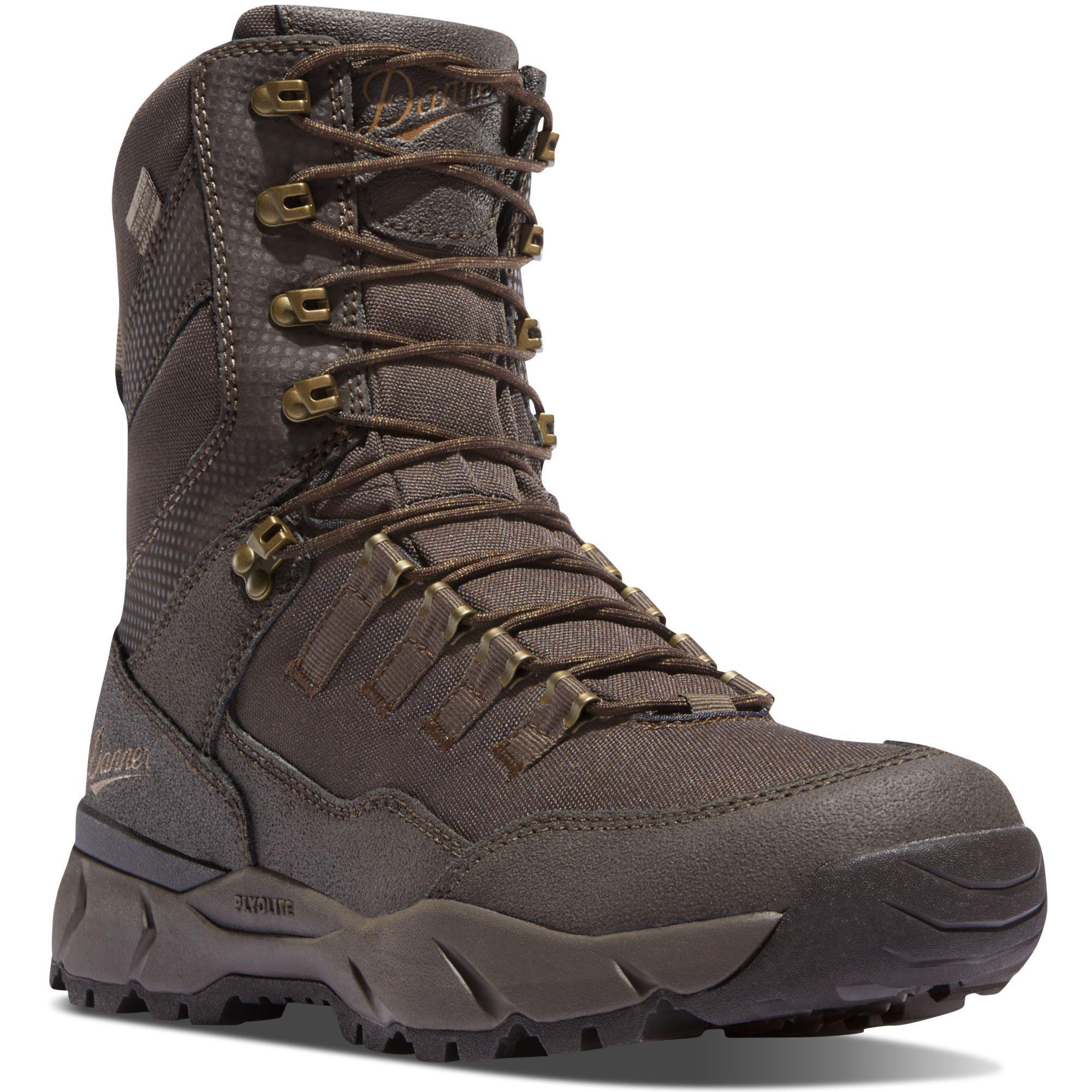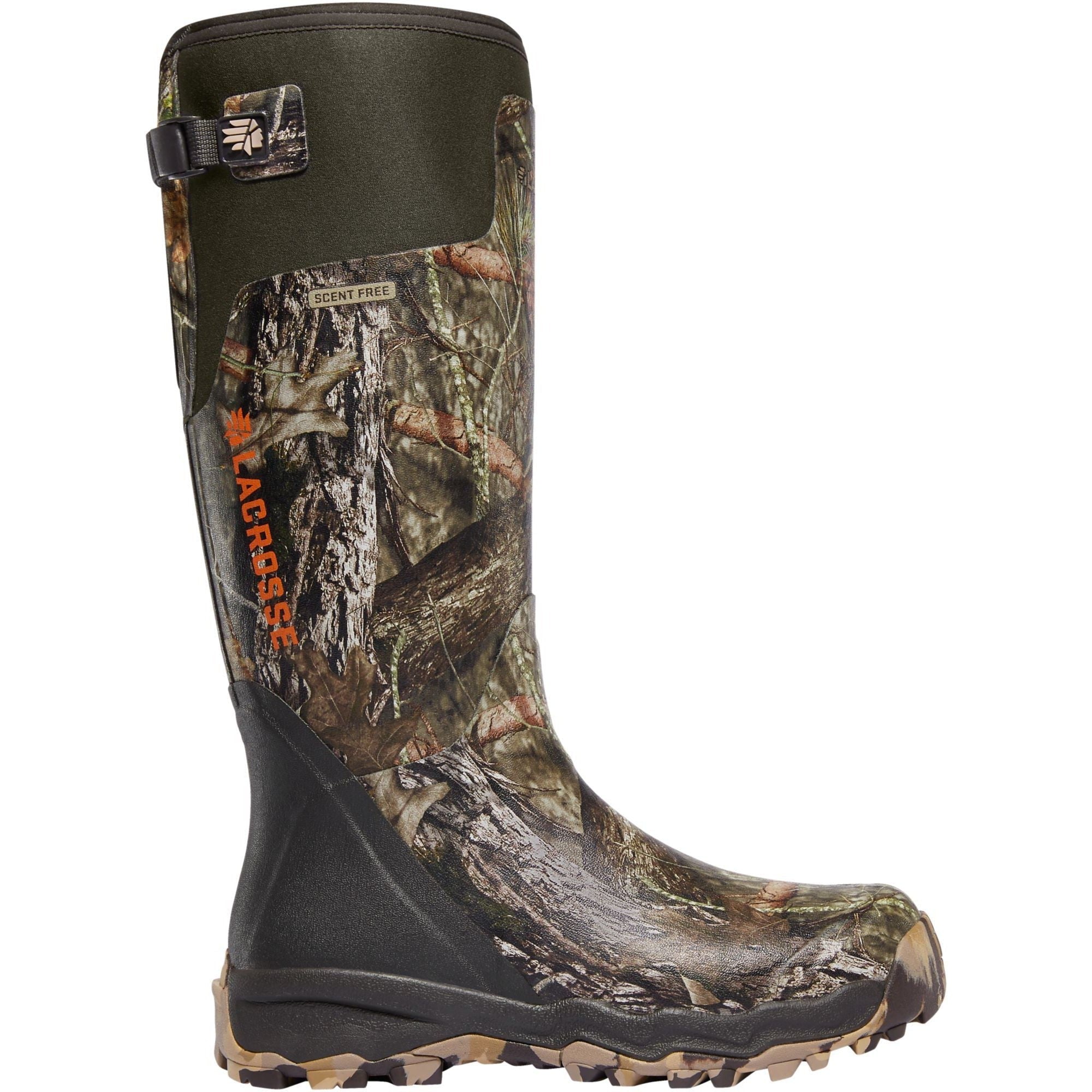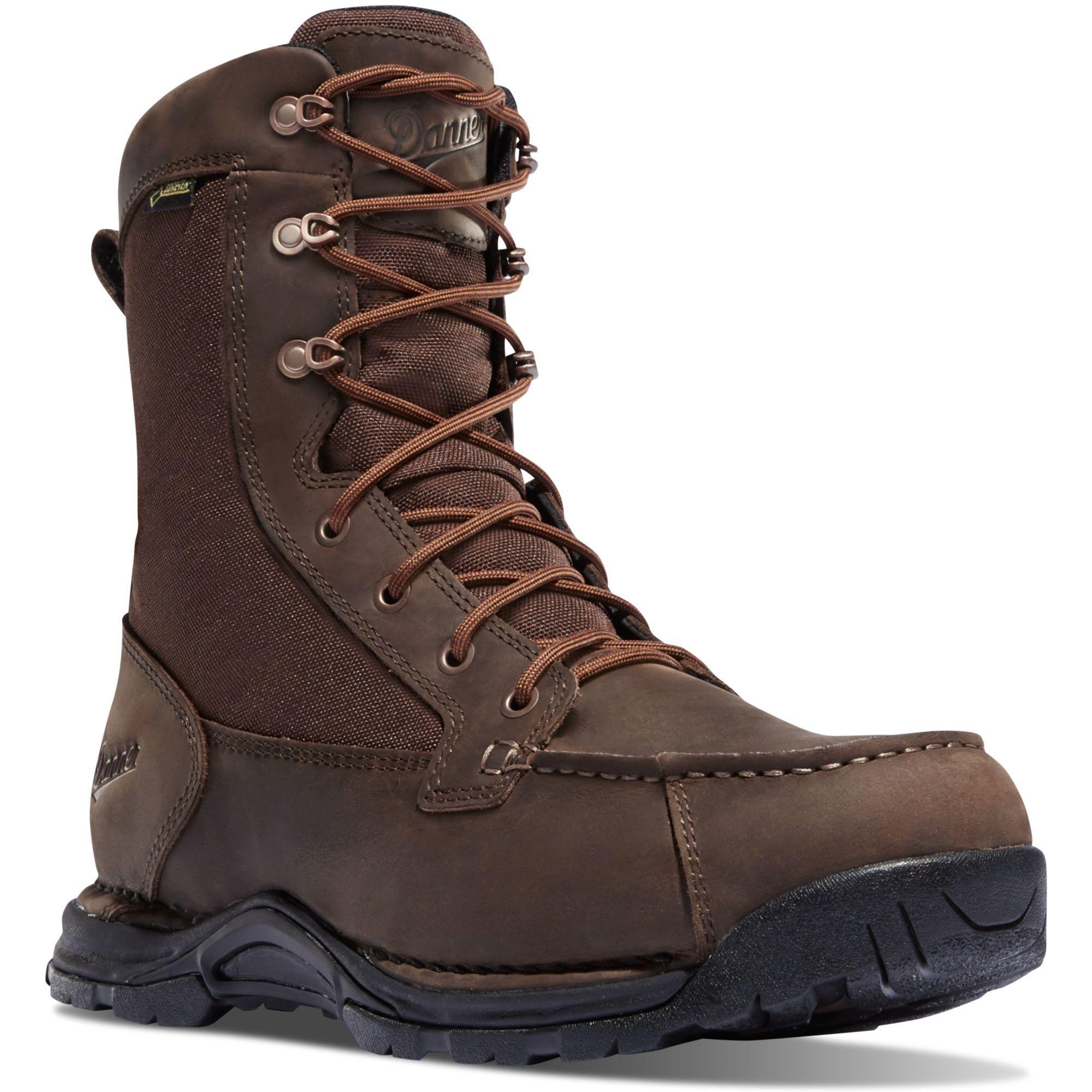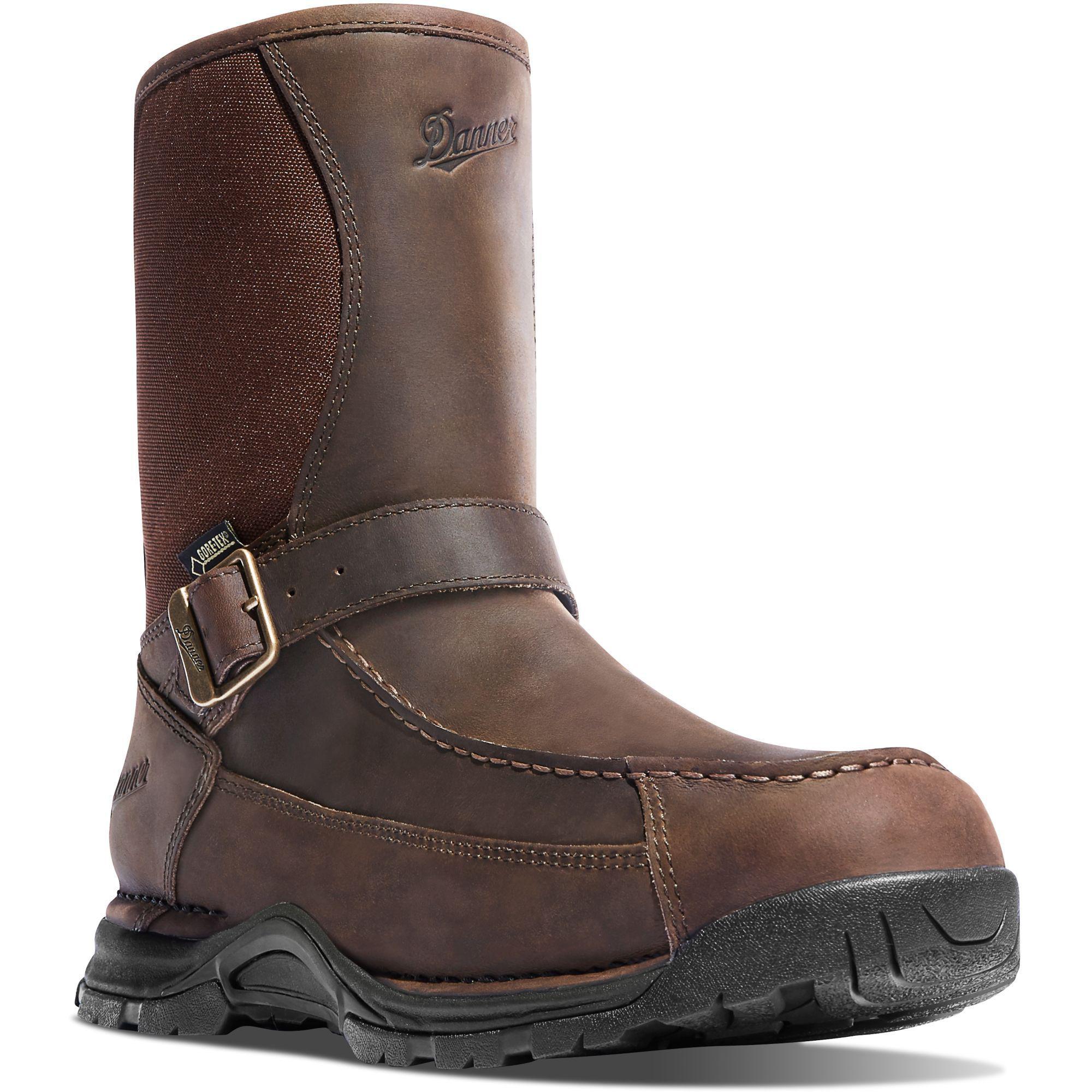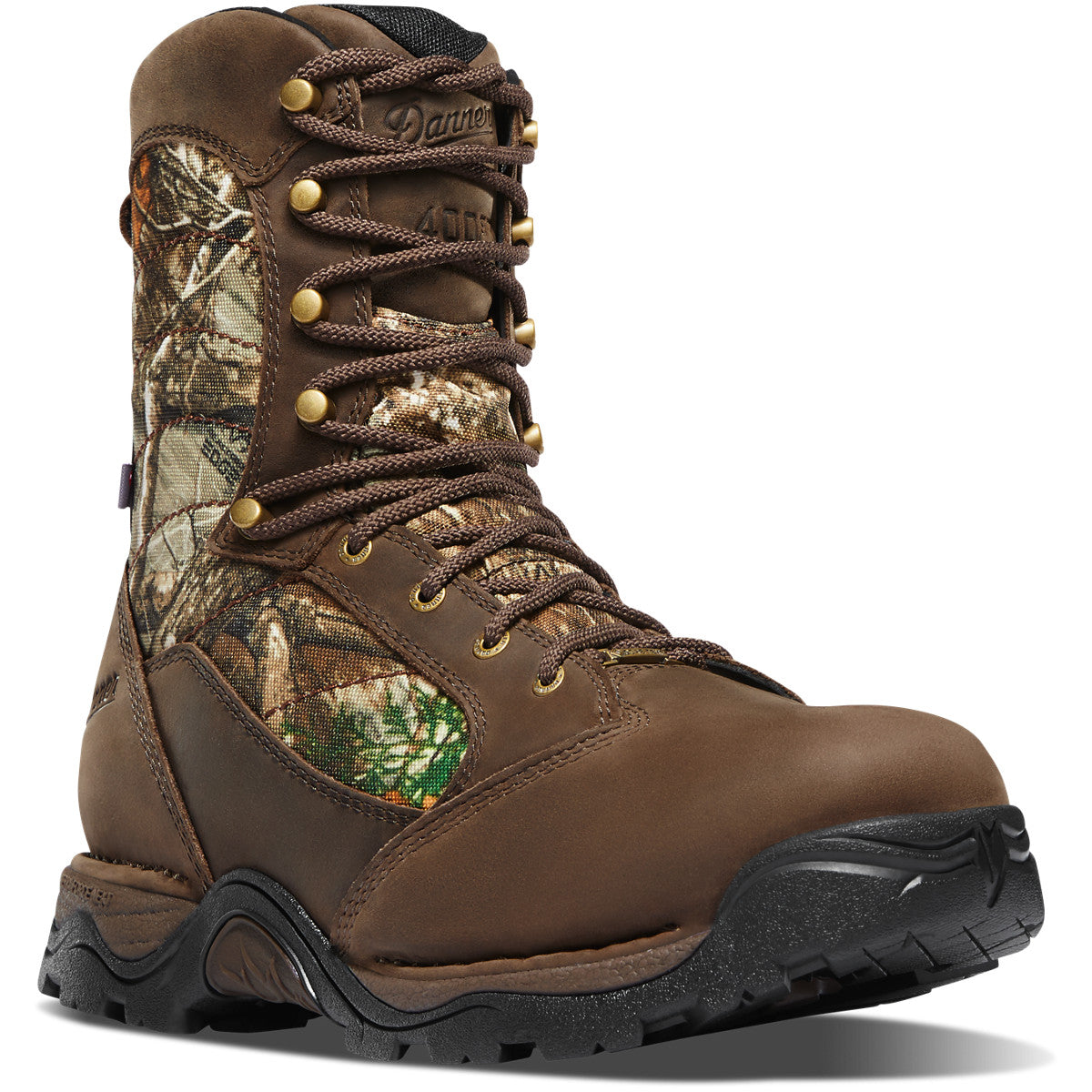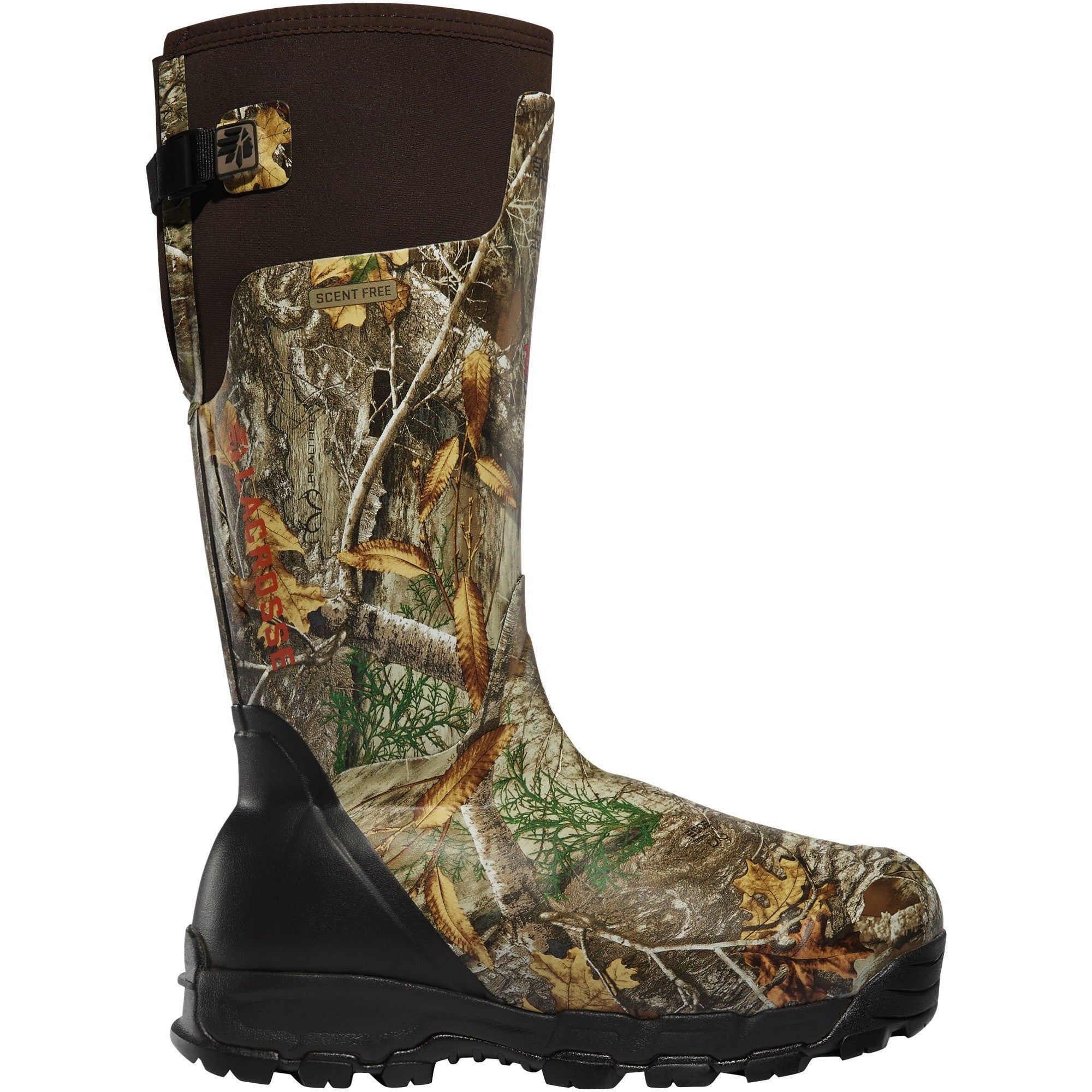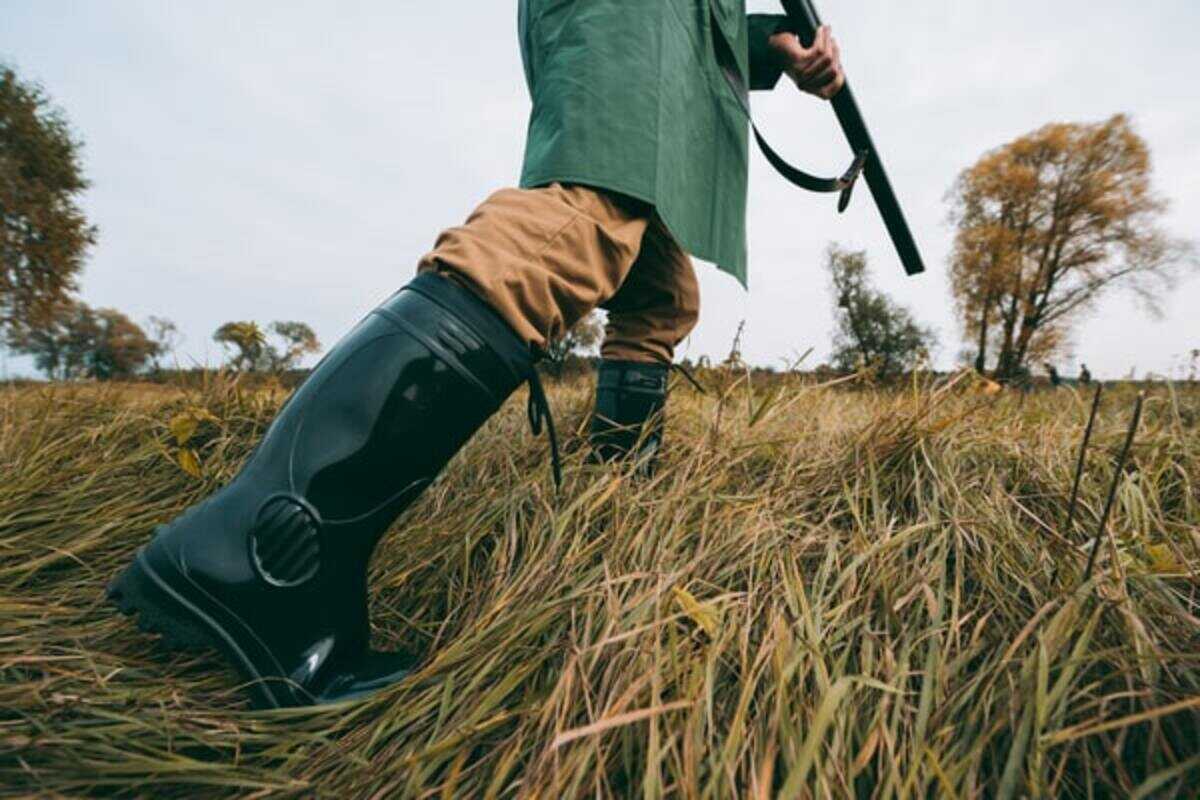You could be the best hunter in the world, fully equipped with top-notch hunting gear, from your lucky pair of hunting socks to the finest firearm. But, if you need to cut your trip short because your feet got wet in unforgiving weather conditions and freezing temperatures or you injured your ankle slipping on gravel on steep terrain, that trophy buck won't be riding back home in your truck.
The best hunting boots are designed to prevent this and allow you to display your full hunting prowess. Our collection of the best hunting boots for men is your ultimate arsenal. However, you still need to make a choice. With such a wide selection of hunting boot options and outdoor footwear to choose from, it can be overwhelming to know what to look for.
This is why we have provided this ultimate guide on how to choose the best hunting boots for your needs. We will dive into the most important features of a quality pair of hunting boots (and throw in a few examples), so you can make your selection by opting for the best hunting boots on the market, combining the key features that match your hunting style.
The Quest for the Best Hunting Boots: Your Ultimate Hunting Season Footwear Guide
Step into the world of mountain hunting footwear – your ticket to conquering extreme conditions and common terrain challenges with all the right pieces of gear. But here's the deal: when it comes to choosing the best hunting boots, every pair of hiking boots or hiking shoes shares a core set of features. Wrap your head around these essentials, and you're on your way to snagging the perfect hunting boot for your escapades this hunting season and more to come.
Because, let's be real, a savvy buyer not only nabs the best hunting boots but also unlocks a whole new level of adventure on hunting terrain. Are you facing unpredictable conditions, battling nature's curveballs or mild temperatures? Facing flat terrain or uneven terrain? Maybe rocky terrain? Steep sidehills? Snowy conditions? Your style of hunting speaks volumes.
It's the secret sauce dictating what types of boots you need, spanning from rugged mountain boots to lightweight boots. So, we will discuss the difference between leather and rubber boots, how insulation works, waterproof protection, the importance of the outsole, and more – all in an effort to help you find the best hunting boots for your unique needs to help you conquer your usual hunting terrain.
Of course, the price factor comes into play, but hey, you've got your budget dialed in – so, no need to delve into that. Just remember never to mistake expensive boots for the best hunting boots. The pricier, the better, is not always true and is one of the most common mistakes hunters make.
[prc-collections-carousel]
The Best Hunting Boots from Leading Boot Brands: Our Top Picks
Whether you're embarking on a rugged expedition or a stealthy pursuit, having the right pair of boots can make all the difference. We've sifted through the market to bring you our top picks, ensuring that your feet are geared up for peak performance and uncompromising comfort.
1. Best Leather Hunting Boots: Rocky Men's Outback Gore-Tex WP Wellington Hunting Boot
The Rocky Outback Wellington hunting boot is meant for southern hunters. It is not insulated and features a breathable, waterproof GORE-TEX construction with flexible soles yet offers ample protection. A Rocky Air-Port cushion footbed moves air around inside your boot, providing cooling comfort and preventing foot sweat, making it one of the best hunting boots for warm weather when you're not facing colder temperatures.
This casual pull-on boot not only provides comfort but excellent traction, too, as you would expect from an all-around boot made for long distances on foot and slippery terrain.
2. Best Cold Weather Hunting Boots: Rocky Men's Sport Utility Max WP Ins Hunting Boot
Meet your ultimate companion for those bone-chilling hunting seasons – the Rocky Men's Sport Utility Max WP Ins Hunting Boot. When it comes to braving colder temperatures, this best cold weather hunting boot has got you covered with ample protection for those cold weather hunts, ensuring your body temperature remains resolute in the face of freezing weather.
Say goodbye to uncomfortable boots and embrace the warmth of a hefty pack of 1,000 grams of 3M™ Thinsulate™ Ultra – excellent insulation meticulously designed to tackle the harshest cold conditions. No more shivers during your hunting season, even in freezing weather and unpredictable conditions – Rocky's Waterproof construction seals the deal.
But it doesn't stop there; if you're conquering rugged, slippery terrains, the Sport Utility outsole guarantees steadfast traction and stable footing. Craft unforgettable memories under any hunting conditions in these 10 inches of dark brown, full-grain leather, and nylon hunting boots because, with the Rocky Sport Utility Max, every step is an exhilarating stride forward.
The Best Hunting Boots: Leather vs. Rubber Hunting Boots
The first difference between leather and rubber boots is the most glaring – the appearance. Even the best rubber hunting boots are going to have a tough time passing as office wear. Leather hunting shoes and boots can easily be worn as everyday outdoor footwear. In the end, it comes down to personal style.
Also, how comfortable the boots are is, in part, determined by the material. If you know rubber boots generally fit the shape of your feet, then you have no issue. However, it's more of a stiff boot. A pair of leather boots is more forgiving – even if they don't fit perfectly right away, the leather will mold to your feet with time, keeping your feet comfortable.
Another difference is the boot height. A pair of leather boots can go from knee- to ankle-height boots. However, you will be hard-pressed to find rubber hunting boots that go below 14 inches.

Waterproof vs. Non-Waterproof Shoes: Which Make the Best Hunting Boots?
Non-waterproof boots have no upside compared to the best waterproof hunting boots. Most hunting shoes and boots are waterproof, so your selection will be severely limited if you have your heart set on a non-waterproof pair. Why even bother? At some point, you'll be in a situation where your feet could get wet – whether it's wading through a stream, rain, or snow.
What you should pay attention to is whether it's a pair of waterproof or boots with water resistance. The key difference between waterproof and water-resistant boots is in the degree of protection – waterproof will last longer in harsher, extreme conditions. So, your best bet is to choose a waterproof pair. Otherwise, you may wish to check a few reviews to see what “water-resistant boots” means for the manufacturer.
For cold-weather hunting, you should always get waterproof boots. These are not situations where you want your feet wet. A water-resistant pair of boots will do the job if you are hunting during late spring, summer, or early autumn.
The Best Hunting Boots According to the Insulation Factor
Insulation is material added to your boots to keep your feet warm. It is measured in grams and usually designated with G – the higher it is, the more grams of insulation the boots have and the warmer your feet are. It prevents cold air from getting in and warm air from getting out. Insulation is a critical aspect of your boots, and you always need to factor it in when choosing the best hunting boots for your needs.
When deciding what the best hunting boots are for you, seasonality is crucial – you won't wear the same boots during summer or late season as you will during winter. If you plan on wearing them during the summer, you should look for boots that are not insulated or feature moderate insulation. The best hunting boots have a special lining that prevents foot sweat and wicks away moisture, but even then, you will start feeling uncomfortable at some point.
Around 200-400 Grams is a good choice for cool summer nights or somewhat colder weather if you are active. Depending on how cold it will be, you simply go up from there. The best cold weather hunting boots can have significantly heavier insulation of up to 1400G, but you won't need that unless you hunt in extremely cool temperatures.
Buying Hunting Boots with the Correct Safety Toe
The type of safety toe is less important for hunting shoes and boots than for other types of work boots. You want to know what you don't need – which is a steel toe. While a steel toe offers the highest level of protection from impact, you are unlikely to need it during hunting activity. It also adds weight to boots resulting in a hefty pack of uncomfortable boots, especially for crossing long distances on foot.
Plus, unlike synthetic materials, steel can get cold quickly, so it is a hindrance for hunting in colder temperatures. The best hunting boots come equipped with a toe made with composite materials or no safety toe at all. This increases comfort and durability without an unnecessary level of protection.
What Kind of Outsole Should the Best Hunting Boots Have?
The outsole in different types of boots is important for two reasons – comfort and safety. In no small part, the outsole determines how the boots feel when you are walking. Luckily, most companies that make the best hunting boots make outsoles using the latest technology, so all of them should be high-quality.
Besides being abrasion-, or oil-, or even electricity-resistant, the outsole determines how stable your foothold is. You need good traction when you are out in the wilderness. If you have ever slipped and injured yourself 30 miles from the nearest road, you know how problematic that can be.
Choose the type of outsole based on the terrain. The best hunting boots have outsoles specifically designed for particular terrain – be it mud, snow, brush, etc. – or are multi-purpose. It may not seem like a big deal while you are in the comfort of your home, but out there, it is better to get all the protection you can. Here are some general guidelines and what to look for in outer soles:
- Slippery Terrain: Aggressive Traction
- Mixed Terrain: Versatile Grip
- Milder Terrains: Comfortable Tread
- Difficult Terrain: Sturdy Traction

In Short: How to Choose the Best Hunting Boots for Men & Women?
[prc-collections-carousel]
Let's get the simple things out of the way first. What shoes are best for hunting? Waterproof and without a steel toe. Most hunting boots fulfill these two requirements, so your selection will be in no way limited.
As far as the other features are concerned, keep these key factors in mind according to your hunting conditions and style of hunting to avoid common mistakes:
- Material: Your preference, based on your hunting style and fit. If you like to rock sturdy boots, such as knee-high rubber or nylon boots, to wade through mud without wet feet, go for it. Or get an ankle-high leather pair of flexible boots you can even wear to the office. It's your choice.
- Boot height: What is the best height for a hunting boot? A mid-height boot strikes a balance between ankle support and flexibility, making it the perfect boot for various scenarios. If wet conditions are on the horizon, avoid lower, ankle-high hiking boots - leaning towards higher types of boots can help you avoid wet feet. Finding the right boot height can define your comfort, stability, and overall hunting performance.
- Insulation: One of the most common questions is, "How insulated should my hunting boots be?" The insulation factor depends on the hunting conditions you will wear them in to prevent cold feet. Always check the grams of insulation on a pair of boots before buying. Warmer boots with heavier insulation are not necessarily better. If you wear them in warm or mild temperatures, an extra layer of insulation will only decrease comfort, so go for moderate insulation.
- Outsole: your hunting journey hinges on your choice of outer soles, so don't tread lightly when making this decision based on the type of terrain and weather conditions you will wear them in. Tackling rough terrain and unforgiving weather? opt for an outsole with grit to navigate while keeping your feet snug. If flat terrain is your jam, prioritize comfortable boots. If your hunts involve conquering steep sidehills, consider boots with flexible soles for ultimate maneuverability.
- Weight: heavy boots that pack weight are great for tackling rough terrains and usually feature heavier insulation, but they might not align with every style of hunting. For those venturing into milder terrains or going long distances on foot, opting for lightweight boots can enhance your agility without compromising durability and level of protection.
Still wondering, "How do I choose a hunting boot?" Remember, you are choosing the best pair of hunting boots for you, so your perfect boot should reflect what you need. On that note...
Elevate Your Hunts with the Best Hunting Boots Today
In the world of hunting, your choice of boots is your ticket to conquering the toughest hunts with unwavering confidence. Whether you're seeking cold-weather hunting boots to withstand the chill, waterproof hunting boots to keep your feet dry, or an all-around boot that adapts to various terrains, the level of protection you invest in can make or break your next hunting adventure.
Remember, mountain hunters, your pair of boots will be your trusty companions through changing hunting conditions, so choosing wisely is paramount. Ready to take your hunts to the next level? Explore our curated hunting boots collection from the best boot brands, where each step becomes a testament to your preparation and dedication including options like best snake proof boots for hunters in high-risk areas.
Step into the realm of peak performance and embark on hunts that will become legendary tales.

FAQ & Bonus Tips
Pssst...! We've got some more scoop to help you find the best hunting boots.
Should Hunting Boots Be Tight or Loose?
A snug fit is crucial for outdoor footwear, but don't go for a vice grip. Your heavy boots need enough room for your feet to breathe, especially when you layer up with those cozy hunting socks. Aim for the middle ground – not too tight that you're squirming and not too loose that you're slipping around. It's all about hitting that sweet spot where comfort meets control. Your hunting escapades deserve nothing less.
How Do You Break in Hunting Boots Fast?
Got the stiffest boots in hand, and you're raring to go on with your hunting activity? Simply flex them before they flex you. Wear them around the house, bend them back and forth – show them who's boss! Now, here's the twist – the common mistakes. Don't jump into an all-day trek on day one. Rome wasn't conquered in a day, and neither is outdoor footwear. Gradually increase wear time, and you'll be striding comfortably in no time. Your feet will thank you.
What Is the Difference Between Hiking Boots and Hunting Boots?
Comparing hunting shoes vs. hiking boots is like comparing apples and oranges in the category of boots. A pair of Hiking Boots is your versatile companion, perfect for conquering uneven terrains with ease. They're designed to handle the twists and turns of trails, ensuring your comfort during a nature hike.
Hunting boots are built to withstand whatever the wild throws your way. Uneven terrains, unpredictable conditions – hunting boots handle it all. So, if you're eyeing that pair of hiking boots for your hunting activity, hold your horses. Different types of boots for different adventures – that's the name of the game.
What Kind of Boots Are Best for Deer Hunting?
When it comes to deer hunting, the best outdoor footwear falls into the category of hunting boots. Specifically, for late-season hunts, insulated, warmer boots are your go-to choice. These will keep your feet warm and comfortable as you track down your trophy across difficult terrain.
